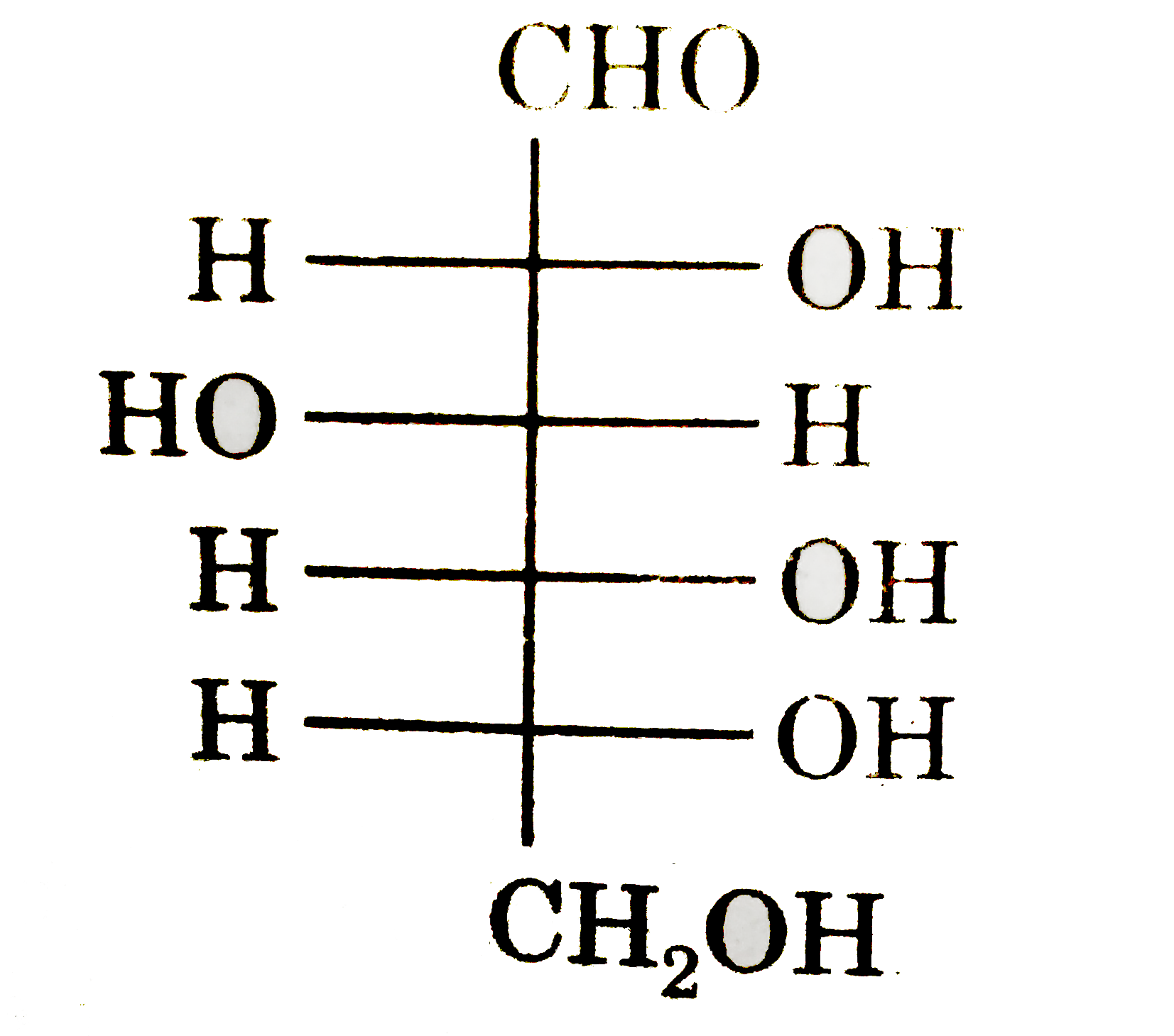Expalin about the cyclis structure of Glucose .
Text Solution
(i) Fischer identified that the open chain Penta hydroxyl adhehyde strcuture of glucose that the proposed did not completely explain its chemical behaviour.
(ii) Unlike simple aldehyde , glucose did not form crystalline bisulphate compound with sodium bisulphate. Glucose does not not give Schiff.s test and penta acetate derivative of glucose was not oxidised by Tollen.s reagent. This behaviour could not be explained by open chain structure.
(iii) 
(iv) In order to explain these is was proposed that one of the hydroxyl group reacts with aldehyde group to form a cyclic structure (hemiacetal form). This also results in the conversation of the achiral aldehyde carbon into a chiral one leading the possibility of two isomers. These tow isomers differ only in the configuration of C1 carbon. These isomers are called anomers.
(v) The two anomeric forms of glucose are called - and β - forms. This cyclic structure of glucose is similar to pyran, a cyclic compound with 5 carbon and one oxygen atom, and hence is called pyranose form.
(vi) The specific rotation of pure α - and β - (D) glucose are 112∘&18.7∘ respectively. However , when pure form any one of these sugars dissolved in water slow interconversion of - D glucose and β - D glucose via open chain form until equilibrium is estabished giving constatn specific rotation +53∘ . This phenomenone is called mutarotation.
|
Topper's Solved these Questions
Similar Questions
Knowledge Check
The structure of D-(+)-glucose is :
 A
A B
B C
C D
D
Cyclic structure of D-glucose resembles with
AfuranBpyranCTHFDoxiran
What is the structure of L-glucose ?
View SolutionWhat is the structure of L glucose?
View SolutionGlucose on reaction with HI gives n-hexane. What does it suggest about the structure of glucose ?
View Solution(i) Which vitamin deficiency causes rickets ?
(ii) Name the base that is found in the nucleotide of RNA only.
(iii) Glucose on reaction with acetic acid gives glucose pentaacetate. What does it suggest about the structure of glucose ?
View SolutionWhen (+) sucrose is hydrolysed, the D-glucose mutarotates downward to +52.7∘. What does this indicate about the structures of (+)-sucrose?
View SolutionWhen (+) sucrose is hydrolysed, the D-glucose mutarotates downward to +52.7∘. What does this indicate about the structures of (+)-sucrose?
View Solution
